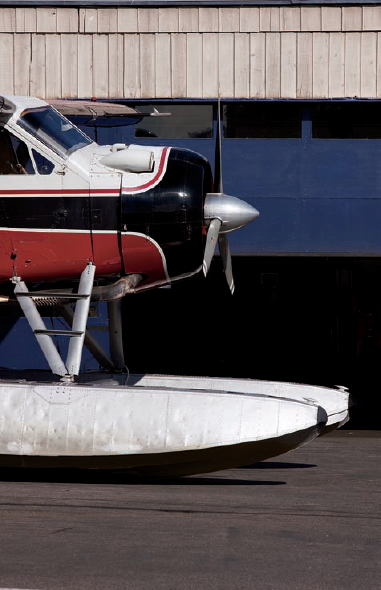Chapter 9. The Elements of Exposure and Composition
If you haven't used a digital SLR before, then the options for controlling exposure on the T2i/550D may seem foreign to you, and knowing when to use them to get specific results may seem mystifying and overwhelming. But once you know how the elements of exposure work together, the camera will make much more sense. In this chapter, you learn how aperture (f-stop), shutter speed, and ISO affect your images, as well as how they work together. And if you are returning to photography after time away, the information in this chapter serves as a refresher on the elements of exposure. In addition to introducing photographic exposure elements, this chapter includes an overview of composition guidelines and tips.

Both strong color and lines dominate this composition of a floatplane waiting for repairs. Exposure: ISO 200, f/11, 1/200 second using −1/3-stop of Exposure Compensation.
The Four Elements of Exposure
Making a picture begins with your creative eye and personal expression. The unique way that you see a subject or scene is the first step in making engaging and unique pictures. Then you use the camera to help you express how you see the scene or subject. While creativity is first and foremost in making images, there is also an essential technical aspect that enables you to use the camera effectively to express your vision.
While the technical ...
Get Canon® EOS Rebel T2i/550D Digital Field Guide now with the O’Reilly learning platform.
O’Reilly members experience books, live events, courses curated by job role, and more from O’Reilly and nearly 200 top publishers.

